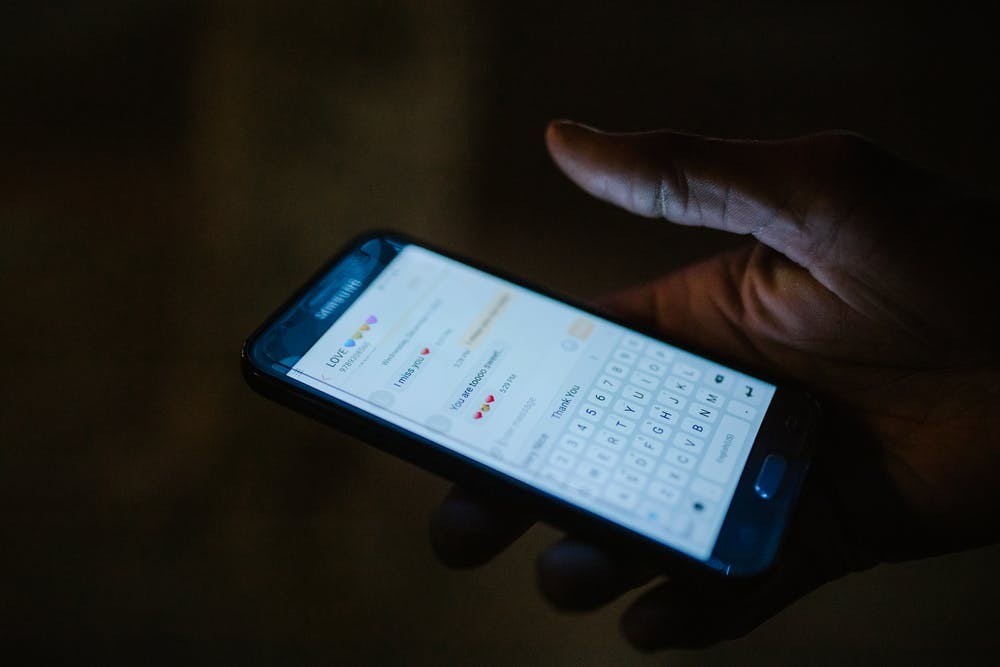In a Relationship, Who Tends to Sext First?
Written by Dr. Sarah Hunter Murray on Mar 24th, 2021

Traditional sexual scripts for men and women prescribe that men should be the ones to initiate sexual activity and to push for more sexual contact while women act as the gatekeepers who say yes or no.
But there is growing evidence that these traditional sexual scripts may be changing over time; Sexual Script Theory was developed well before texting and "sexting" (the act of sending or receiving sexually suggestive or explicit texts, partial or fully nude photos, and videos) came into existence.
We also don't know all that much about how sexting functions in adult romantic relationships as, to date, most research has focused on the sexting behaviors of teens and emerging adults who are "hooking up" or dating more casually.
The question is, in a mixed-sex relationship, who is most likely to send a sext first? That is, are men and women continuing to abide by traditional sexual scripts where men might sext as a way to initiate sexual contact? Or, perhaps, does sexting provide a new landscape for men and women to interact sexually?
The Study
In a new study recently published in the Journal of Sexual & Relationship Therapy, researchers explored the sexting behaviors of 464 participants between the ages of 18 and 69 (the average age was 31.49 years old). The participants were somewhat evenly split between men (55.8 percent) and women (44.2 percent) however the majority of the participants (70.5 percent) identified as White and 78.9 percent identified as heterosexual.
When asked about the last time they engaged in sexting with their partner, 45.3 percent of the sample indicated they had initiated the sexting while 54.7 percent of the sample report they responded or replied to a sext from their partner.
The authors then looked at how initiating sexting might be related to participant demographics and other study variables including: the participants motivations to sext (e.g., body image reinforcement, sexual purposes, etc.) various sexual feelings (including sexual shame and sexual permissiveness) self objectification (the degree to which we objectify ourselves) and partner objectification (the degree to which we objectify our partner).
Findings
The researchers found that individuals who reported initiating the last sexting event in their relationships were significantly predicted by age. That is, for every one year increase in age there was a 3 percent decrease in the odds that the individual initiated sexting. In other words, initiating sexting was more likely to occur among younger participants.
Participants who sexted first were also less likely to have discomfort or shame around sex and were more likely to sexually objectify their partner.
Finally, the authors noted that there were no significant gender differences, in that men were no more, and no less, likely to initiate sexting than women.
What Does This Mean?
It's interesting that gender was not a significant predictor of who initiated sexting, as this appears to go against traditional sexual scripts.
The authors of the study suggest that because sexting is a relatively new phenomenon, it may fall outside of longer standing sexual initiations rituals (such as flirting, leaning in for a kiss, or explicitly asking a partner if they want to have sex) for which we may have developed stronger, and more ingrained, gender norms.
Limitations
Aside from the sample being largely White and heterosexual, it should also be noted that a limitation of this study is that the authors did not ask participants about whether their partner requested that they sent a sext. More research would be required to explore this piece of the sexting dynamic and whether that might lead to any different conclusions.
Take Away
Based on this study findings, these results appear to add to our growing body of literature which suggests we are moving away from men being the initiator and women being the gatekeeper in sexual activity, particularly in the context of mixed-sex relationships.



SHARE